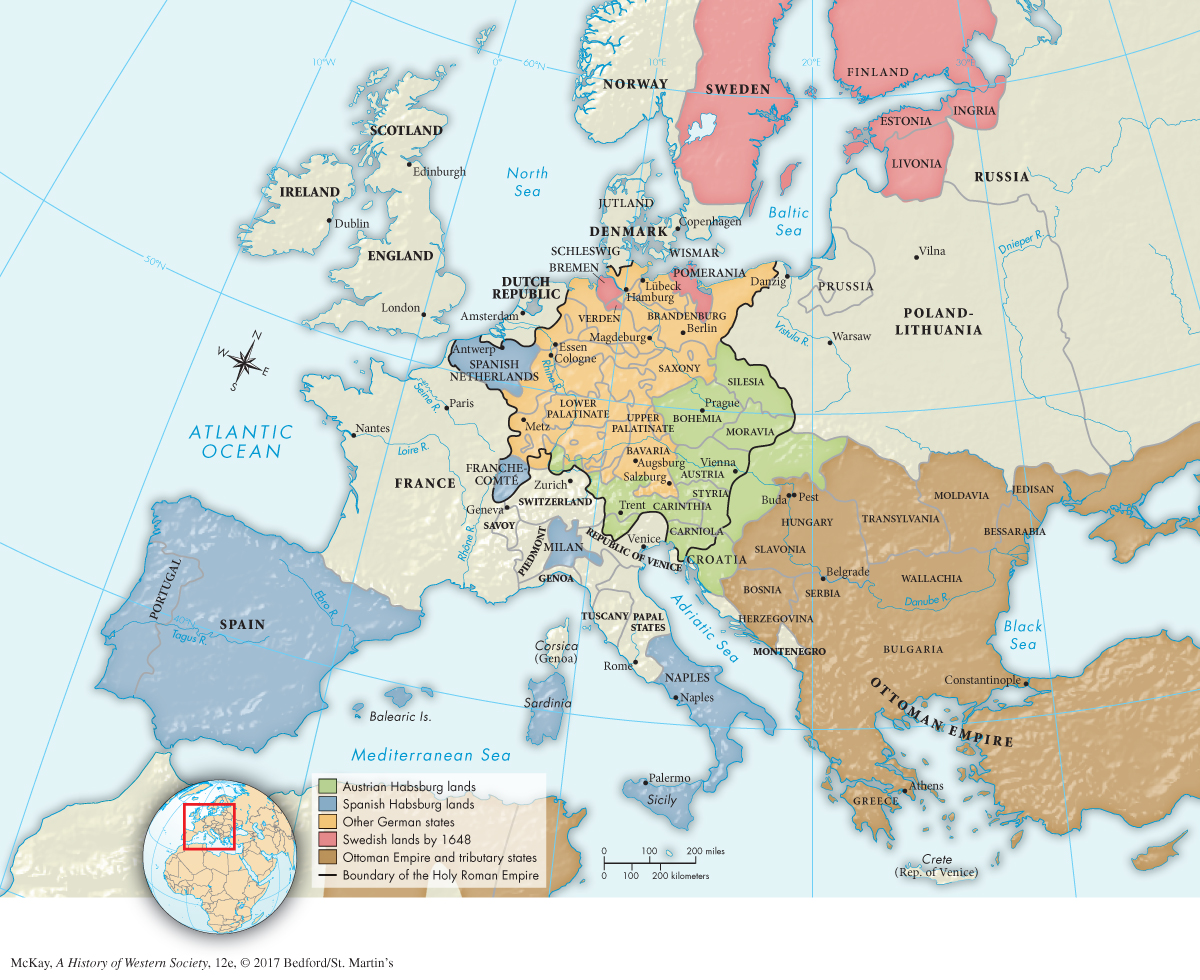A History of Western Society: Printed Page 468
A History of Western Society, Value Edition: Printed Page 452
A History of Western Society, Concise Edition: Printed Page 468
The Thirty Years’ War
Harsh economic conditions in the seventeenth century were greatly exacerbated by the decades-
The war is traditionally divided into four phases. The first, or Bohemian, phase (1618–1625) was characterized by civil war in Bohemia between the Catholic League and the Protestant Union. In 1620 Catholic forces defeated Protestants at the Battle of the White Mountain. The second, or Danish, phase of the war (1625–1629) — so called because of the leadership of the Protestant king Christian IV of Denmark (r. 1588–1648) — witnessed additional Catholic victories. The Catholic imperial army led by Albert of Wallenstein swept through Silesia, north to the Baltic, and east into Pomerania, scoring smashing victories. Under Charles I, England briefly and unsuccessfully intervened in this phase of the conflict by entering alliances against France and Spain. Habsburg power peaked in 1629. The emperor issued the Edict of Restitution, whereby all Catholic properties lost to Protestantism since 1552 were restored, and only Catholics and Lutherans were allowed to practice their faiths.
The third, or Swedish, phase of the war (1630–1635) began with the arrival in Germany of the Swedish king Gustavus Adolphus (r. 1594–1632) and his army. The ablest administrator of his day and a devout Lutheran, he intervened to support the empire’s Protestants. The French chief minister, Cardinal Richelieu, subsidized the Swedes, hoping to weaken Habsburg power in Europe. Gustavus Adolphus won two important battles but was fatally wounded in combat. The final, or French, phase of the war (1635–1648) was prompted by Richelieu’s concern that the Habsburgs would rebound after the death of Gustavus Adolphus. Richelieu declared war on Spain and sent military as well as financial assistance. Finally, in October 1648 peace was achieved.
The 1648 Peace of Westphalia that ended the Thirty Years’ War marked a turning point in European history. For the most part, conflicts fought over religious faith receded. The treaties recognized the independent authority of more than three hundred German princes (Map 15.1), reconfirming the emperor’s severely limited authority. The Augsburg agreement of 1555 became permanent, adding Calvinism to Catholicism and Lutheranism as legally permissible creeds. The north German states remained Protestant, the south German states Catholic.

The Thirty Years’ War was the most destructive event for the central European economy and society prior to the world wars of the twentieth century. Perhaps one-